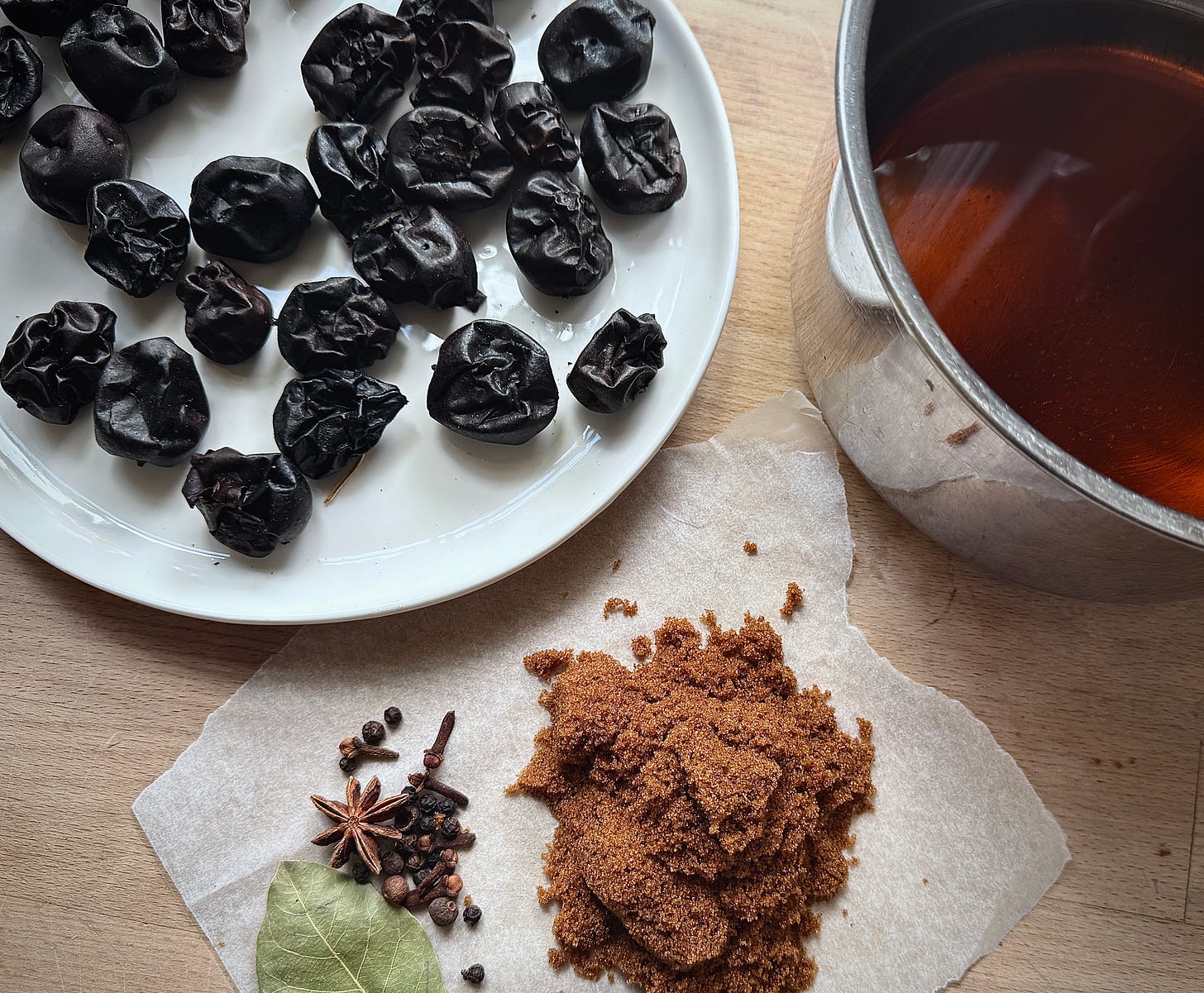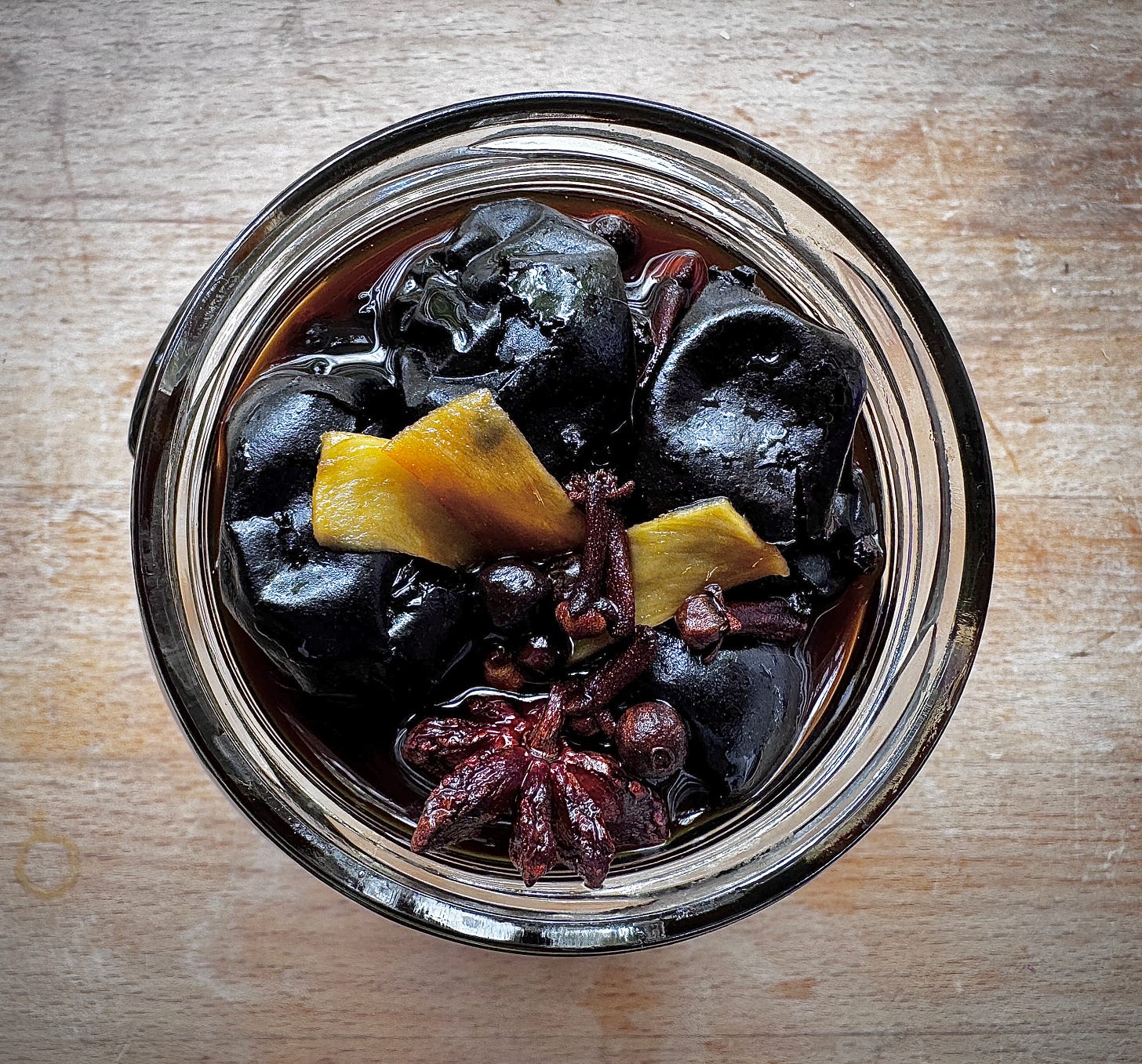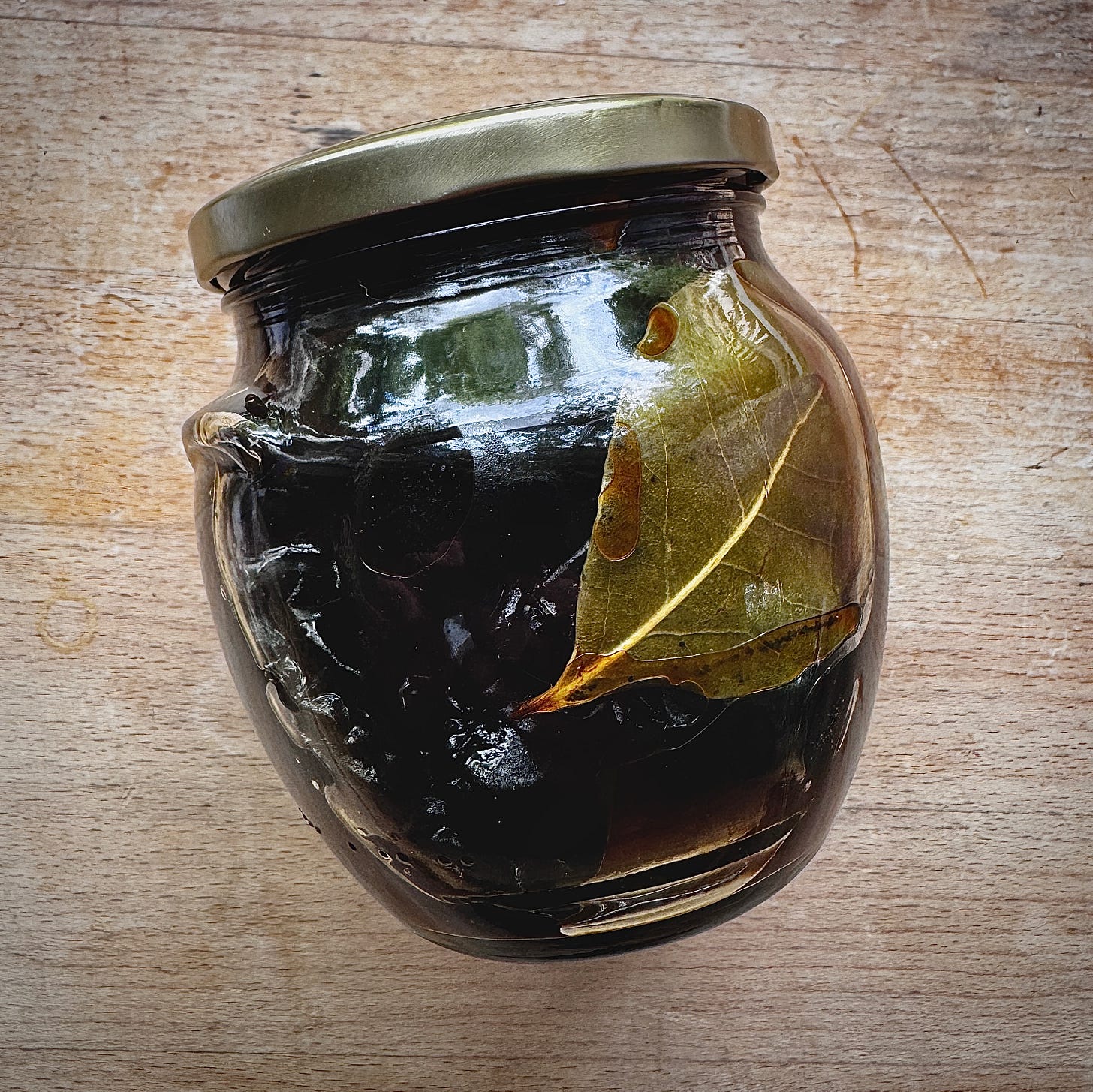Pickled, sweet cured and salted
Three rather interesting techniques for you to show off to your friends
‘Life- a spiritual pickle preserving the body from decay
Ambrose Bierce 1842-1914
West Berkshire, July 2025
I now truly dislike wasps
After a week where I’ve not had much luck with our bees, I hope to have turned a corner after what in beekeeping terms has been a dramatic intervention. The little nucleus that I put together from splitting part of the main hive to look after our new Queen that I wrote about last time has been decimated by wasps. This summer in this part of England, the wasp nests are large, aggressive and abundant. They have shown absolutely no mercy, killing nearly every bee in the small box that I set up to look after our Queen. I found her after a week, still in her tiny transport cage, candy plugs still intact. The bees had not even a chance to eat their way through to free her as they attempted to defend their small hive from attack. I’m glad in some ways that they never managed to free her, as she would have likely been killed in the onslaught from the yellowjackets who have left the small hive empty, cold, and stripped of nectar and larvae. The capped brood that transferred over is likely dead, as the heat from the bees that is needed to sustain life ceased after the attack. I tried tunnel entrances to no avail, a pipe, grass inserted into the opening, anything to slow down the relentless attack of the warmongering , greedy wasps.
Calling in help from a kindly local beekeeper as I was unsure how to proceed with an empty box and a humiliated queen with her forlorn attendants. Unable to split the main hive down any further and with time ticking loudly by, we made a plan that had to succeed, or this tiny little Queen with the blue dot on her back to remind me that she is so very young, would likely be lost.
Though today isn’t really about bees, and I’ll keep this story for next time, but safe to say that as I write this, it seems that our quick intervention has been a success.
At least so far.
Three techniques
There are three techniques for you to try here today. Firstly, the final stage of my pickled walnut recipe. By now, the green walnuts that you put into brine and then dried in the sun are ready for a soak in hot vinegar. There is a gravadlax recipe using wild Sea trout and fennel pollen, and finally a cured and air-dried Bluefin ‘Mojama’.
Lucky you.
Up on the roof
I place my foot on the base of the wall below the small window and pull myself up against a low branch of the fig tree that grows up and over the back of the house, the tree bowing low with fat fruits that are beginning to swell and will soon be ready to pick. There are already a few figs that have ripened early and fallen from their stems onto the stones underneath, their smooth skins torn open, red pulp spilling out, sticky with wasps that feed greedily on the sugary insides. I place another foot on the brick and twist my way upwards using the heavy bough to lever myself up onto the top of the roof where I’d hidden the metal tray of green walnuts, brined for two weeks as I explained in a previous piece, left up here out of the way in the sun to dry for the last few days amongst piles of fallen magnolia floribunda leaves that lay fallen, furled, thick and crisp. A fuzzy bottomed bumble bee bobs awkwardly above my head, a plump little bee that seemingly defies gravity and who I believe lives under one of the warm sloping roof tiles as he or she always seems to be here whenever I climb up to turn the nuts over as they dry in the wind.
Socks, the black and white cat with his magnificent curled whiskers and even more magnificent grin, lounges around on the parapet wall. He is busy as usual, focused solely on the dark arts of his murderous intention
He is a hunter.
A killer of exceptional skill and mettle. A cat who is firmly of the belief that he’s well hidden out of sight and with that assumption, no butterfly, fledgling, mouse or indeed squirrel is safe.
Pickling the walnuts
I’d tucked the metal tray up against the edge of a wall under the pitched amber coloured clay tiles of the roof, and covered it with a loose mesh of chicken wire twisted over the top of the nuts to prevent any marauding squirrels from stealing the dry, shrivelled and blackened husks of the walnuts. Strangely, they are light now that they’re dry, brittle in my hand as I let them fall through my fingers, any traces of the heavy dye that might stain have now gone and they are wizened and hard. Sixty or so dried unripe walnuts that are now ready to be pickled with sugar, spices and malt vinegar, placed into jars to be left in the dark for a year.
That’s if indeed I can wait that long.
I start by bringing a pot of water to the boil, placing the hard little nuts in a steaming basket and placing a lid on top. I sit them over the pot, set to bubble at a gentle simmer and set my watch to countdown for ten minutes. This step will ensure that the frangible little outer shells that have dried to a crisp will be tender once again to better absorb the hot pickling liquid.
In another saucepan I pour about one litre of malt vinegar, add a thumb sized piece of root ginger, peeled and sliced into slivers, along with a teaspoon of cloves, star anise, the same again of allspice berries and a small spoonful of black peppercorns along with around four hundred grams of a dark muscovado and a bay leaf or two. I place it on the heat and let it come to a boil, then turn off the heat to infuse.
Whilst the pickle gets itself ready, I place two glass jars with their lids alongside each other in a low oven set to just over one hundred degrees Celsius. These jars must first be washed so that they are spotless, then sterilised in the heat of the oven for around ten minutes or so, an important step, or you risk all of your efforts going wrong.
I let the mixture steep for a while whilst the little black nuts steam in the pot, and when the time is up, I remove the hot jars from the oven and tip the nuts inside. I fill them up with the hot, dark, spicy, sweet vinegar almost to the brim, and then using a spoon I attempt to chase any small spices and seeds left in the pan, hooking out any of the last stragglers and drop them into the pickles, then finally placing a disc of parchment paper on top of each pot and then screwing down the hot lid, turning the jar upside down to allow a vacuum to form. When they’re cool enough to handle, they come along with me to their place in the cellar, tucked away from my impatience at the back of a high shelf where I’ll try my hardest to forget about them for a year. In all honesty, they’ll likely be fine to eat by this autumn, though a year spent in the dark will do them no harm. It will surely make them even better, and when the time comes, I shall have made a strong cheese to accompany them.
Keep reading with a 7-day free trial
Subscribe to A Private Chef to keep reading this post and get 7 days of free access to the full post archives.







